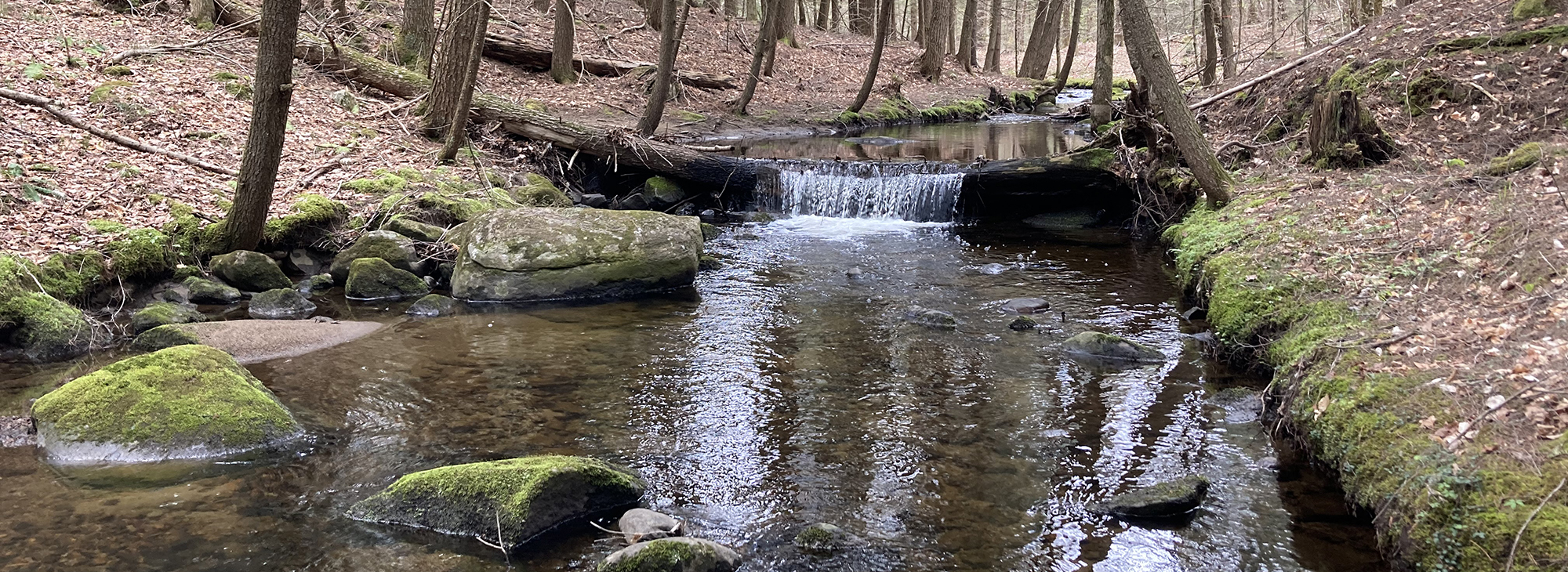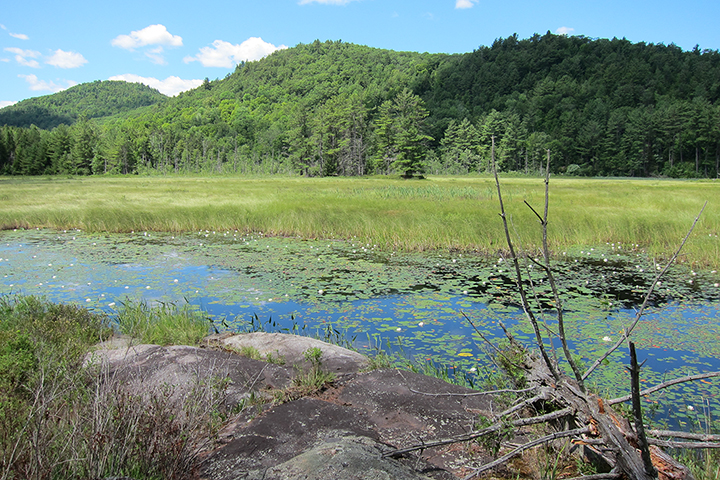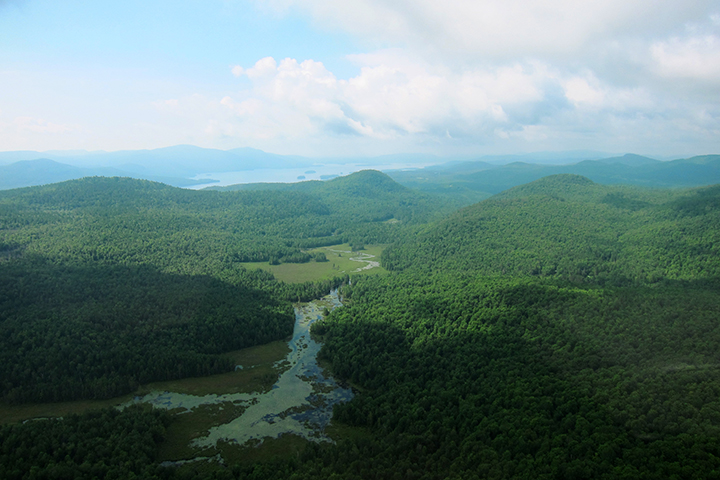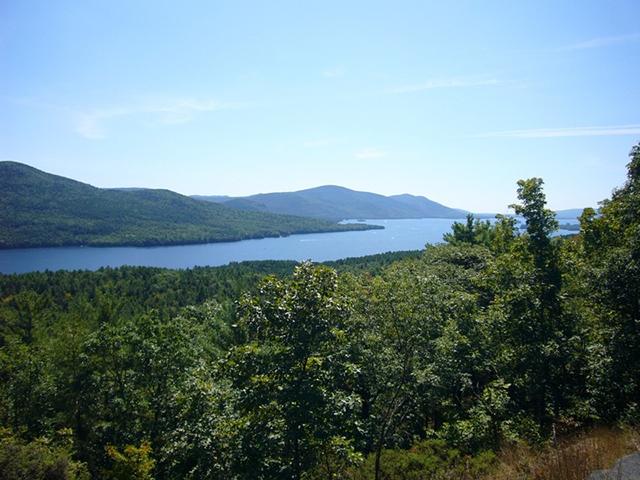
May 20, 2022 Indian Brook & Northwest Bay Conservation Initiative
Town of Bolton
The majority of the water in Lake George comes directly off the land in the watershed through streams. Over 141 streams flow into Lake George, making up 55% of the water that enters the Lake. Two-thirds of this stream-flow comes from just eight tributaries. The watersheds of these top eight tributaries make up almost half of the terrestrial watershed (44%).
This Initiative is a long-term effort by the LGLC to work with willing landowners to protect important and sensitive land within the 7,500-acre Indian Brook watershed, which empties into Lake George’s Northwest Bay. The results of this effort will allow the land to continue doing what it does best—naturally filter and control the quantity and quality of the millions of gallons of water that flow into Lake George.
Water Quality Impact:
The Indian Brook watershed includes a significant area of streams and wetlands, which are incredibly important elements to a healthy lake ecosystem. Wetlands provide a natural filtration system, slowing stormwater and runoff, and absorbing potentially damaging pollutants before the water reaches the main stream or larger waterbody.
Wetlands are some of the most productive habitats on the planet. They often support high concentrations of animals—including mammals, birds, fish and invertebrates—and serve as nurseries for many of these species.
Land Connectivity:
Protected land currently owned by the LGLC and New York State surround this area, presenting a number of opportunities to create a contiguous block of conserved land that could act as a corridor for wildlife and human recreation.
Contiguous blocks of land are essential for “wildlife corridors,” or pathways for animals, particularly larger mammals such as bears, moose, bobcats and fishers. These corridors allow animals to travel the long distances required to survive without being exposed to dangers and obstructions such as roads and development.
The connectivity of land is also highly desirable for human recreation. Ecotourism is a viable and economically beneficial draw for Lake George towns. Connected lands provide the opportunity for expanded trail systems that may attract hikers, birders and other outdoor enthusiasts from all over the world.
Viewshed:
A large portion of this area can be viewed from the roads of Bolton Landing, as well as the waters of Lake George. As a region known and loved for its aesthetic beauty, the protection of this viewshed is important not only for the enjoyment of those who visit, but also for the economic vitality of Bolton Landing and the entire Lake George basin.
Progress
The LGLC has permanently protected an additional 10 acres in the Indian Brook subwatershed of Bolton, adjoining our 147-acre Saddlebrook conservation easement completed in October 2021. The land, purchased from Kurt and Florrie Stoffel, includes three acres of wetlands and about 700 feet of Saddlebrook stream corridor. We thank the Stoffels for their patience and willingness to work with the LGLC on this great conservation project!
When the LGLC purchased two properties totaling 48 acres within the Indian Brook and Northwest Bay Conservation Initiative in 2022, the Stromberg family presented a matching challenge of up to $50,000 to help us raise the funds necessary to complete the projects.
We are pleased to report that we successfully met the Challenge in August! Our many thanks to the Stromberg family and the donors who contributed toward these projects and the Challenge.
The LGLC has protected two parcels in the Town of Bolton, a total of 48 acres of forest and wetlands, including 3,745 feet of Indian Brook and seasonal streams that feed into Indian Brook.
These projects were completed in part thanks to a generous $50,000 matching challenge presented by the Stromberg Family. We are pleased to report that we successfully met the Challenge in August! Our many thanks to the Stromberg family and the donors who contributed toward these projects and the Challenge.
In October, we purchased 10 acres that adjoin a 130-acre property protected in 2016. Extending the preserve boundaries with this acquisition enhances the ability of its wetlands to slow and filter surface waters and to mitigate storm events that deliver sediment to the lake. Larger contiguous areas of conserved lands also provide better wildlife habitat and are more resilient to natural disturbances.
The second property, a 38-acre parcel that includes nearly 3 acres of wetlands, was purchased November 22.
Current zoning on these properties would allow for development that could result in disturbed soils, impervious surfaces, and septic systems that would threaten water quality.
Mature and healthy hemlock stands exist on these lands, which will be monitored by the LGLC for signs of the invasive pest hemlock woolly adelgid (HWA). If HWA is identified, the LGLC will manage the infestation to prevent the spread and limit the water quality impacts of the invasive pest.
In October of 2021, we protected 150 acres of Bolton uplands through the use of a conservation easement, a tool used by land trusts that keep land in private ownership while protecting the land’s conservation values. The property includes one mile of stream corridor and 10 acres of wetland within the Indian Brook tributary of Lake George.
The property is owned by the DePace family, who sold the easement to the LGLC out of a desire to ensure its protection for future generations. Originally, the 150 acre tract was split into 23 residential lots, and allowed for 23 homes to be built. The DePace family and the LGLC worked to extinguish those 23 lots into just three lots. By doing so, important natural resources and the rural character of this region of Bolton are protected forever.
The landowners Tony and Gail DePace said, “Knowing that large parcels of Bolton Landing will be protected and environmentally healthy for many years to come is what prompted us to work together with the LGLC. Protecting the lands means protecting Lake George. The LGLC took every step to ensure that our personal needs and Bolton Landing’s environmental needs were met. The LGLC team worked extremely hard to put everything in place, no easy task after three years of getting every detail in order. We are fortunate to have the LGLC working diligently to protect Lake George and the lands surrounding it. Their mission is truly to protect the beauty we are fortunate to call home.”
The LGLC acquired the 159-acre Wing Pond property in December of 2016. This iconic property includes 750 feet of Northwest Bay Brook tributary and about 15 acres of wooded and open wetlands, including Wing Pond itself. It is also adjacent to the NYS Pole Hill Pond Preserve and has potential for extended trails.
In June of 2016, the LGLC purchased a 114-acre forested property since named the Isabel La Roche Godwin Preserve. Including 1,000 feet of stream corridor as well as several acres of vernal pools, the property is an important addition to the protection of the Indian Brook watershed. Its protection also established a recreational connection between the New York State’s Northwest Bay Tract (Pole Hill Pond Preserve) and the LGLC’s Amy’s Park.
In January of 2016, we protected a 129-acre property in Bolton Landing that is the former site of the SUNY Albany telescope and observatory. The property includes 100 acres of wetlands, the confluence of the two main branches of Indian Brook, and 2,200 feet of stream corridor. Funds received by SUNY Albany from the sale of this property will be used for student scholarships for environmental-related academic programs.
Bill and Lisa Stromberg
LGLC Fund-A-Need Donors from 2016, 2017 and 2018 events
Individual Donors




